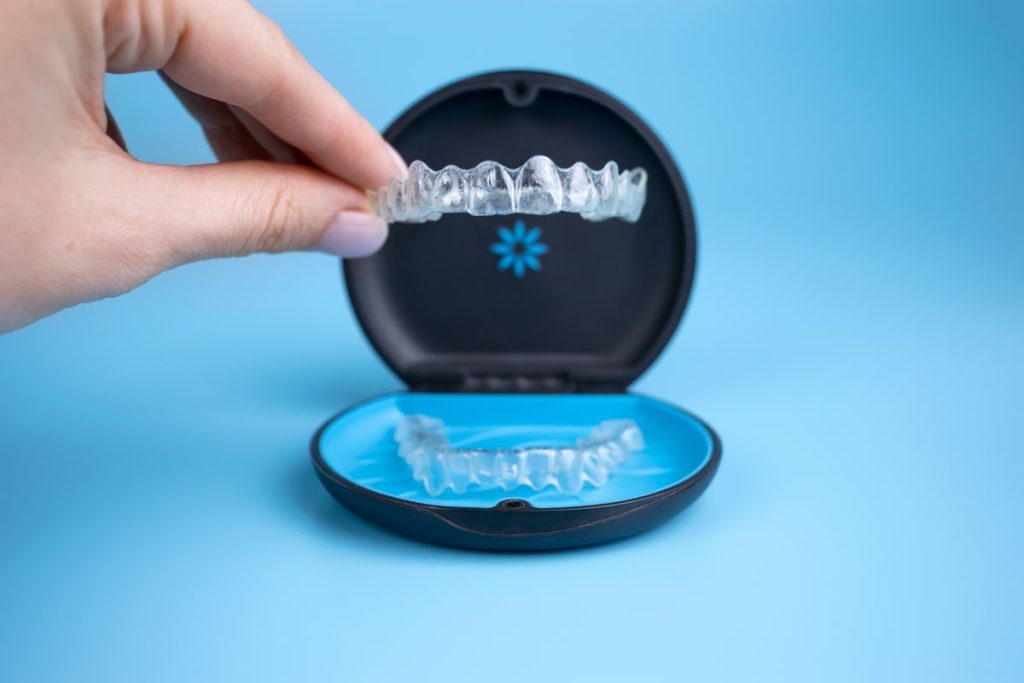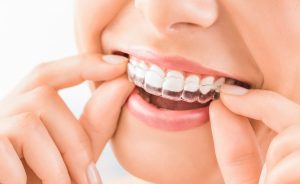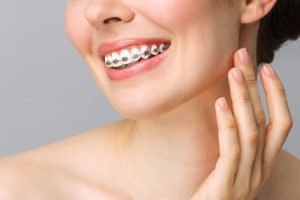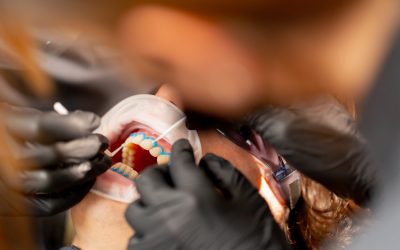July 19, 2024
Dr. Andres de Cardenas
All-on-4 dental implants, cosmetic bonding, Cosmetic Dental Care Services, cosmetic dentist Miami, Cosmetic Dentist Whitening, Cosmetic Dentistry, Daily Health Tips, dental care, Dental Care Tips, Dental Cleaning Appointment, Dental Implant Procedure, dental solutions, Dentist Appointment, family dental Care dentist, Family Dentist, FL, healthy teeth, Natural teeth whitening, Oral Cancer, Oral Care, professional denstists, Smile Makeover, Teeth Alignment, Teeth discoloration, Teeth Whitening, teeth whitening sensitive teeth, The Miami Cosmetic Dentist
Family Dental Care Miami | Miami Cosmetic Dentist > Blog > Blog - Category > The Advantages of Invisalign for Teeth Whitening
The Advantages of Invisalign for Teeth Whitening

Thanks to recent advancements in dental technology, teeth whitening is more achievable than you may think. Invisalign has revolutionized not only teeth alignment but teeth whitening as well. A key reason behind Invisalign’s rise in popularity is the use of clear aligners, which are virtually invisible and have significantly impacted orthodontics.
The Invisalign treatment, devised by your orthodontist, comprises multiple custom-made, clear aligners designed to fit your teeth perfectly. As time progresses, these aligners apply gentle pressure to straighten and align your teeth. One of the chief advantages of Invisalign is its virtually invisible nature. These clear aligners allow treatment to be discreet and unintrusive, a far cry from the often noticeable traditional metal braces.
Invisalign stands out compared to traditional braces, often associated with self-consciousness due to their noticeable brackets and wires. Furthermore, metal braces require more intensive maintenance and may cause discomfort. On the other hand, Invisalign aligners are comfortable, removable, almost invisible, and easy to clean, allowing users to flash a smile during the teeth-straightening process confidently.
Invisalign works using a highly accurate digital planning system that maps the intended movement of your teeth, skillfully guiding them from a crowded state to an orderly arrangement. You’ll transition to a new set of aligners every two weeks under your dentist’s careful supervision.
Get the Smile you Deserve!
Seek out the best cosmetic dentist, Dr. Andres de Cardenas, and call us today!
The Uniqueness of Invisalign Aligners
In orthodontic treatment, Invisalign aligners are a unique and remarkable solution designed to perfect your smile. The appeal of these clear aligners lies in their comfort, discretion, and functionality, effortlessly blending with your daily routine and aesthetic considerations.
1. The Comfort and Convenience of Invisalign Aligners
Introducing Invisalign to your orthodontic treatment plan brings unprecedented convenience to your life. Unlike traditional braces, these aligners are utilized without brackets or wires, making them removable brings ease to daily activities such as brushing, flossing, and even eating, as the aligners can be removed at your pleasure, minimizing inconvenience and discomfort.
Further, being adaptable to your needs ensures a tailored treatment plan that focuses on straightening your teeth with a well-timed and systematic approach.
2. The Clear Aligners: Nearly Invisible Solution
Invisalign aligners are clear, thus offering an almost invisible orthodontic solution. This feature promotes the privacy of your treatment, freeing you from the constraint of noticeable metal braces. You can maintain confidence as a patient, knowing that your teeth are steadily straightened even during social interactions.
It’s hard not to appreciate this nearly invisible solution that significantly reduces the potential self-consciousness or stigma often associated with traditional braces.
Invisalign Aligners vs. Traditional Braces
While the aesthetic benefits of Invisalign aligners are evident, their remarkable functionality truly sets them apart. Unlike traditional braces, they allow a more flexible treatment plan customized according to the patient’s needs. What’s more, there’s no need to keep rushing to the dentist for adjustments—Invisalign aligners are designed to minimize your visits, saving you time without compromising the quality of your treatment.
In comparing Invisalign aligners with traditional braces, a potent benefit that crowns the former is a reduced risk of mouth injuries. Traditional braces, with sharp edges and wires, can cause accidental scrapes and cuts. Invisalign work takes this risk out of the equation, making your orthodontic journey much safer.
The unique qualities of Invisalign aligners make them a superior choice for those seeking a convenient, nearly invisible, and functional solution to straighten their teeth. It’s the ideal blend of comfort and effectiveness without the typical drawbacks of braces. As always, consult your dentist and review your dental insurance conditions to understand whether Invisalign treatment is an option for you.
A Confident Smile — How Invisalign Can Help

Since its inception, Invisalign has been at the forefront of improving smiles, one aligner at a time. Using advanced precise aligner technology, Invisalign has gained an edge over traditional braces. No wonder more patients are considering Invisalign as their preferred treatment option. This innovative system has transformed countless lives, promising a perfect smile conveniently and comfortably.
Straighten Your Teeth: How Invisalign Can Help
Invisalign aligners are designed to apply planned pressure on your teeth, causing them to move gradually. The custom-made aligners straighten teeth effectively, regardless of the complexity of your case. From mild to moderate crowding and spacing issues to more severe cases like overbite, underbite, or crossbite, Invisalign offers a versatile treatment option.
Invisalign’s treatment time varies per individual, determined by your doctor. However, many patients notice a significant improvement in their tooth alignment in just a few months. Regardless of the duration of treatment, the result promises straighter teeth and a boost in oral health.
The New Smile Promise with Invisalign
Regarding orthodontics, nothing counts more than the promise of a new smile. Invisalign offers the means to straighten your teeth and adds to your confidence. With Invisalign clear aligners, you can begin your journey towards a confident smile, moving away from misaligned teeth. Invisible braces treat many dental issues, promising positive and noticeable results.
Moreover, the straightforward plastic design of Invisalign renders them much more discreet than regular braces, ensuring your confidence remains untouched throughout the treatment. The cost of Invisalign treatment may vary depending on the complexity of the case and your dental insurance coverage. However, the investment is worth the plethora of benefits of Invisalign, particularly compared to traditional metal braces.
Find an Invisalign-trained orthodontist or dentist near you today to start your journey toward a healthier and more confident smile.
The Invisalign Treatment Process
The stages of Invisalign treatment are streamlined and personalized to ensure a pleasant and efficient experience for patients. Let’s explore the vital steps, from consultation to completion, to understand this innovative orthodontic solution better.
1. Consultation with an Invisalign Trained Professional
Your Invisalign journey begins with a consultation with an Invisalign-trained professional like Dr. Andres de Cardenas. This initial meeting allows the dentist to assess your unique situation and discuss whether Invisalign is your ideal treatment. In addition to reviewing your dental insurance coverage, the consultation explores your specific orthodontic concerns and expectations to create a tailored treatment plan.
2. The Invisalign Treatment Plan — What to Expect
Once approved for Invisalign treatment, it’s time to delve into the treatment plan. Your dentist will create customized clear aligners using advanced digital imaging technology. It ensures a precise fit and accurately represents your mouth’s structure.
Invisalign works through a series of aligners that gradually shift your teeth into the desired position. You’ll typically wear each set of aligners for around one to two weeks, removing them only for eating, brushing, and flossing. This process continues through the different aligner stages, and with each progressive set, your teeth will move closer and closer to the ideal alignment.
Throughout your Invisalign treatment, scheduled check-ups with your dentist ensure your progress is closely monitored. These visits are crucial to adjust your treatment plan as needed, guaranteeing optimal results.
3. How Long Does Invisalign Treatment Take
The duration of your Invisalign treatment largely depends on your specific orthodontic needs. In general, most cases can be completed within 12 to 18 months. It is important to note that the effectiveness and timeframe of the Invisalign treatment process are directly related to patient compliance. Thus, diligently following your dentist’s instructions is essential to achieving the desired results in the estimated time frame.
Moreover, an essential part of the Invisalign treatment involves wearing retainers after completing the aligner series. The retainers maintain the new alignment of your teeth and prevent them from returning to their original position. Following the dentist’s guidance on retainer usage is crucial to keep your newly straightened teeth in perfect order.
The Invisalign treatment process is a well-structured and personalized journey designed to transform your smile discreetly and effectively. By opting for Invisalign aligners, you’ll benefit from a convenient, nearly invisible, and time-efficient orthodontic solution. Consult a trusted and skilled dentist like Dr. Andres de Cardenas to see if Invisalign treatment aligns with your dental goals.
Cost of Invisalign Treatment: What You Need to Know
As Invisalign proves an increasingly popular orthodontic treatment choice, the cost is an essential factor to consider. The cost of Invisalign treatment varies depending on factors like your case’s complexity and location.
Dental insurance plans may also cover part of the expense, so checking your insurance coverage before deciding is imperative.
Factors Influencing the Cost of Invisalign
- Complexity: The more complex your dental case, the higher the number of aligners required, resulting in a higher treatment cost.
- Treatment Time: The longer the treatment time, the greater the overall price due to periodic visits and adjustments.
- Geographic Location: Costs can vary significantly depending on where you seek treatment. Dental services in urban areas and large cities may charge more than those in rural locations.
- Dental Insurance Plan: The extent of orthodontic treatment coverage significantly diverges among various plans. Review your policy to know what percentage is covered, and factor that into your cost calculations.
Comparing the Cost — Invisalign vs. Traditional Braces
While Invisalign treatment is often more expensive than traditional metal braces, it’s crucial to consider its added benefits, such as increased comfort, aesthetics, and convenience. Due to their visibility, braces might affect your confidence during treatment. Invisalign clear aligners, on the other hand, offer a discreet teeth-straightening method that promotes your oral health since they are easier to clean.
Investing in an Invisalign treatment may be worth the additional expense in the long run, considering its unique advantages, like convenience and nearly invisible appearance. Moreover, not all dental cases might be suitable for Invisalign treatment, so discussing your options with a dentist or orthodontist is crucial before starting any orthodontic journey.
So how do you choose between Invisalign and traditional braces? Ultimately, it’s a personal decision, and weighing the pros and cons of each option will help you identify the best treatment option that aligns with your needs and lifestyle. Remember, a confident smile starts with informed decision-making!
Invisalign and Teeth Whitening — The Perfect Combination

Invisalign aligners aren’t just a revolutionary solution for straightening teeth and an ideal companion for teeth whitening efforts. Here’s why combining Invisalign treatment and teeth whitening can help you achieve a seamlessly bright smile that beams confidence.
The Benefits of Using Invisalign for Teeth Whitening
When straightening teeth and whitening them go hand in hand, the result is an all-around flawless smile. Invisalign aligners are not only virtually invisible, but they also make the most of your teeth whitening efforts. While the aligners gradually reposition your teeth, they create an ideal surface for applying whitening agents.
Invisalign treatment addresses crowded or misaligned teeth, thereby eliminating hard-to-reach spots that tend to harbor plaque and stains. By straightening your teeth, Invisalign aligners can help reduce the chances of uneven whitening, leading to a uniformly brilliant smile.
How Invisalign Supports Teeth Whitening Efforts
The design of Invisalign aligners plays a crucial role in supporting teeth whitening. The snug fit ensures the whitening gel is evenly distributed across your teeth, optimizing the outcome of your whitening treatment.
Another way Invisalign aligners serve your teeth whitening endeavors is by being removable. Unlike traditional braces, Invisalign aligners can be removed during teeth whitening sessions, meaning there is no need to navigate around brackets or wires. This ease of access allows for thorough whitening product application, ultimately enhancing your treatment’s effectiveness.
A Confident Smile Starts with Invisalign and Teeth Whitening
Invisalign treatment paired with teeth whitening offers a comprehensive pathway to a confident smile. The combination of advanced orthodontic technology and modern cosmetic dentistry has made achieving the perfect smile an accessible dream for many.
With Invisalign aligners, you don’t have to compromise on your day-to-day life, and alongside teeth whitening, you can look forward to a noticeably brighter and straighter smile. This blend of treatments can help you feel more self-assured, whether flashing a friendly smile during a casual meet-up or standing in front of a crowd delivering a presentation.
Remember to discuss this dual approach with your dentist to understand if this is feasible for your current dental health situation. With the proper guidance, a straighter and brighter smile could be an Invisalign treatment away.
Are You Choosing Invisalign Over Traditional Braces?

When it comes to the quest for straighter teeth, is it a straight shot to Invisalign, or are traditional braces holding their ground?
The Advantages of Choosing Invisalign
Opting for Invisalign treatment brings an array of advantages:
- Comfort: Invisalign clear aligners are custom-made and fit comfortably over your teeth, unlike the brackets and wires associated with traditional metal braces.
- Convenience: The aligners are removable, enabling you to eat, brush, and floss without obstruction, a feature that traditional braces cannot offer.
- Aesthetics: The clear plastic used to make Invisalign aligners ensures they are almost invisible when worn, offering a more appealing option than visible metal braces.
- Predictability: Your dentist or orthodontist, with a 3D digital scan of your teeth and advanced aligner technology, can visualize each stage of the treatment and the expected outcome, something impossible with traditional braces.
Invisalign Compared to Traditional Braces — The Winner
When Invisalign goes up against traditional braces, several factors reinforce its superiority. Traditional braces pose drawbacks like inconvenient dietary restrictions, oral discomfort, the challenge of maintaining oral hygiene, and, often, a longer treatment time to achieve optimal results.
Conversely, with Invisalign, tooth movement is planned efficiently using an advanced transparent aligner system, potentially giving you a new smile in a more condensed timeline. According to the consumer guide, an approximate comparison reveals that the cost of Invisalign treatment is competitive with that of traditional braces. However, the actual cost of treatment would be determined by your doctor and may vary based on complexity and treatment goals.
Moreover, the invisibility of Invisalign aligners eclipses the visibility of metal braces, offering a treatment option that harmonizes with your lifestyle. Insurance coverage may be comparable, and dental insurance plans often cover some treatment costs, making Invisalign a feasible option.
A New Era of Aligners: The Rise of Invisalign
Invisalign has ushered in a new era in orthodontics. They’ve transformed the braces narrative, replacing ‘regular braces’ with ‘invisible braces.’ This innovation reflects the desire for a treatment option that straightens teeth without sacrificing aesthetics or comfort. The popularity of Invisalign aligners is evident in the satisfying smiles of patients worldwide. Dental professionals continually advocate the advantages of this advanced precise aligner treatment, promoting a shift from traditional methods.
Moreover, the success of associated practices, like teeth whitening with Invisalign, further reinforces its flexible and holistic approach to creating straighter teeth and confident smiles. With the guidance of a dentist or orthodontist, individuals considering Invisalign can expect a tailored treatment plan, which includes a series of custom-made aligners, a timetable for their regular replacement (typically every two weeks), and optionally, a set of Vivera retainers for post-treatment maintenance.
So if you’re considering orthodontic treatment, the Invisalign journey might be your ideal route to a straighter, healthier, and more confident smile.
Final Thoughts on the Cost and Effectiveness of Invisalign
When considering the cost of Invisalign, it’s crucial to maintain sight of this treatment’s impressive benefits. A tailored Invisalign treatment plan can deliver superior results to traditional braces in the hands of a skilled orthodontist or dentist.
Invisalign aligners showcase an innovative convergence of technology and design. They’re effective in straightening teeth and enabling aesthetic enhancements like teeth whitening to seamlessly integrate into your treatment journey.
The cost of Invisalign treatment is often comparable to that of conventional braces, and dental insurance might cover a part of the treatment costs, making it a viable choice for many. But the dividends from this investment are more than just monetary. They invest in improved self-esteem, a boost in confidence, and, ultimately, transformational smiles.
Invisalign clear aligners have crafted a new narrative in orthodontics that advocates for patient comfort, aesthetics, and impressive outcomes. Isn’t it time you started your Invisalign journey?
Frequently Asked Questions About Invisalign

Question 1: Can Invisalign cause teeth discoloration?
The discoloration of teeth occurs due to poor hygiene rather than the aligners. Every dental apparatus requires maintenance, including regular cleaning, to limit plaque buildup and potential discoloration. Therefore, it’s critical to maintain good oral hygiene throughout the Invisalign treatment process.
Question 2: Can everyone use Invisalign for teeth whitening?
While Invisalign is a powerful tool for teeth alignment and whitening, its suitability depends on individual dental health. Therefore, it’s recommended to consult with your orthodontist to understand if it’s the right solution for you.
Question 3: How Long Does Invisalign Treatment Usually Last?
The treatment duration can vary based on individual needs. However, on average, it lasts around 12 to 18 months. After assessing your dental needs, your orthodontist will give you a more accurate timeline.
Question 4: Can Invisalign Be Used at Any Age?
Absolutely! Invisalign can work for both teens and adults. However, traditional braces might be a more appropriate solution for children whose teeth and jaw are still developing. Consult your orthodontist on the best solution for you or your child’s needs.
Question 5: Does Wearing Invisalign Hurt?
Most patients experience discomfort or pressure during the first few days of wearing a new set of aligners, which is normal and typically a sign that the treatment is working. However, the discomfort is usually less than with traditional braces, and patients commonly get used to the feeling over time.
Question 6: How Often Do I Need to Wear My Aligners?
For the best results, wearing your aligners for 20-22 hours per day is suggested, removing them only for eating, drinking anything other than water, and cleaning your teeth.
Question 7: Will Wearing Invisalign Affect My Speech?
Some people might observe a slight lisp when they first start wearing the aligners, but this typically goes away in a few days as your tongue adjusts to having the aligners in your mouth.
Question 8: Can I Eat and Drink With My Aligners in?
It’s advised to remove your aligners before eating or drinking anything other than water to prevent damage to the aligners and avoid the risk of staining them.
Question 9: What If I Lose or Break an Aligner?
If you lose or break an aligner, immediately let your orthodontist know. They will advise whether you should move on to the next set or if a replacement aligner is necessary.
Knowledge is power when it comes to selecting the right orthodontic treatment option. By asking questions and seeking clarification from your orthodontist, you will gain insight into the Invisalign process and see if it aligns with your dental needs.
Call Dr. Andres de Cardenas today at 305-251-3334!
Cosmetic dentistry offers many options for people who are unhappy with the appearance of their smile. If you’re one of these people, we encourage you to seek out the veneers, cosmetic dentistry in Miami.
Get In Touch With Us
Recent Posts
- Bright Smiles, Brighter Futures: Why Cosmetic Dentist Whitening Is Worth It
- Safeguard Your Smile: Family Dental Care Dentist Debunks DIY Dentistry Tips!
- Dental Implant FAQs: What to Know About the Recovery Process
- The Health Benefits Of Cosmetic Dental Care Services: Beyond Vanity
- The Ultimate Cosmetic Dental Checklist For Miami, FL Residents
Related articles
July 5, 2024
Dr. Andres de Cardenas
All-on-4 dental implants, cosmetic bonding, Cosmetic Dental Care Services, cosmetic dentist Miami, Cosmetic Dentistry, Daily Health Tips, dental care, Dental Care Tips, Dental Cleaning Appointment, Dental Implant Procedure, dental implant recovery, dental implants, dental solutions, Dentist Appointment, family dental Care dentist, Family Dentist, FL, healthy teeth, Oral Cancer, Oral Care, professional denstists, Smile Makeover, Teeth Alignment, Teeth discoloration, Teeth Whitening, The Miami Cosmetic Dentist
Safeguard Your Smile: Family Dental Care Dentist Debunks DIY Dentistry Tips!
June 21, 2024
Dr. Andres de Cardenas
All-on-4 dental implants, cosmetic bonding, Cosmetic Dental Care Services, cosmetic dentist Miami, Cosmetic Dentistry, Daily Health Tips, dental care, Dental Care Tips, Dental Cleaning Appointment, Dental Implant Procedure, dental implant recovery, dental implants, dental solutions, Dentist Appointment, Family Dentist, FL, healthy teeth, Oral Cancer, Oral Care, professional denstists, Smile Makeover, Teeth Alignment, Teeth discoloration, Teeth Whitening, The Miami Cosmetic Dentist



